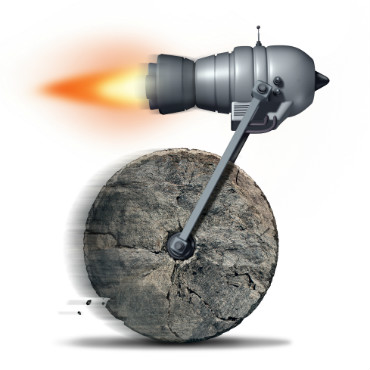Accelerating IT modernization

It's not the money, it's the outcome that matters most when it comes to MGT.

The Modernizing Government Technology Act passed in the House and is currently under consideration by the Senate Committee on Homeland Security and Governmental Affairs, but the eventual passage of this important, bipartisan piece of legislation is uncertain.
Much of the scrutiny and attention for MGT focuses on the establishment of an IT modernization fund, a revolving fund that could be leveraged by federal agencies to jump-start their modernization work. Establishing investment funds is often a dicey proposition, generating concerns from appropriators and agencies alike as to how to ensure funds are appropriately managed and spent. Indeed, were it not for the establishment of both agency working capital funds and the governmentwide fund at the General Services Administration, it's a safe bet to assume that MGT would have already been enacted.
And so it's important to remember that in the case of MGT, it's less about the money and more about the results.
The misunderstanding about MGT is that this new fund would result in a net increase to the over $90 billion that the federal government already spends every year on IT.
It shouldn't.
The focus on IT modernization should be squarely on reversing the dangerous trend of spending up to 80 percent or more of agency IT funds to maintain aging and insecure legacy infrastructure and systems, and instead, providing agencies with access to modern computing tools and approaches to improve mission outcomes. IT modernization, when done well, will likely not only reduce the current cost of IT operations, but could also provide the engine to optimize business processes, improve customer experience and allow new technologies, tools and best practices to be embraced.
So while it is necessary to make investments to modernize, the power of MGT isn't the establishment of a fund, it's the imperative to move. The prize is creating a greater sense of urgency and a stronger demand signal to reinvigorate and reprioritize agency efforts to migrate to the cloud, rationalize legacy applications and get rid of IT solutions no longer delivering results.
Depending on the challenges your agency currently faces, you may need to finish your transition to the cloud, automatically update or "refactor" the COBOL code for an old but faithful legacy mainframe system, move to COTS, introduce robotic process automation, retire systems no longer needed or move to a capability-as-a-service. Indeed, not every legacy system needs to be replaced, and one of the worst things that many agencies could do right now is embark on massive multiyear new system development efforts.
By focusing on near-term wins, agencies can help allay fears that modernization efforts will result in large investments from a central fund that don't get paid back for years. IT modernization works best when it works quickly, staying ahead of the changing pace of technology and repurposing current sustainment funds to provide rapid change and a near-term return on investment.
The most important thing is to have a plan -- to proactively decide what to sunset, what to stabilize and what to replace. The key is to act. It's time to move. Living on obsolete equipment and systems is a ticking cybersecurity time bomb.
And the need to act doesn't just reside with agencies. It resides with Congress too, starting with passage of MGT and then continuing on with oversight focused on outcomes rather than on heated rhetoric about past problems and failures. We should applaud the bipartisan efforts Reps. Will Hurd (R-Texas) and Gerry Connolly (D-Va.) and Sens. Tom Udall (D-N.M.) and Jerry Moran (R-Kan.).
That said, the Senate still needs to quickly finish its work to pass this legislation. We must collectively set the demand signal that change must happen and that IT modernization progress will be measured and positive results rewarded and celebrated.


